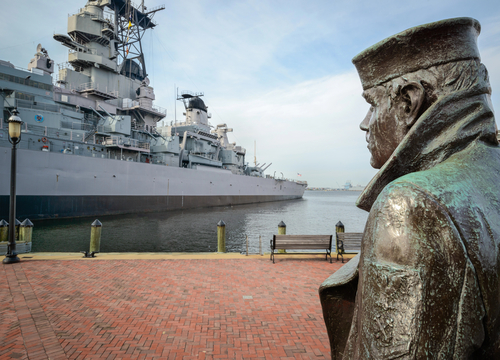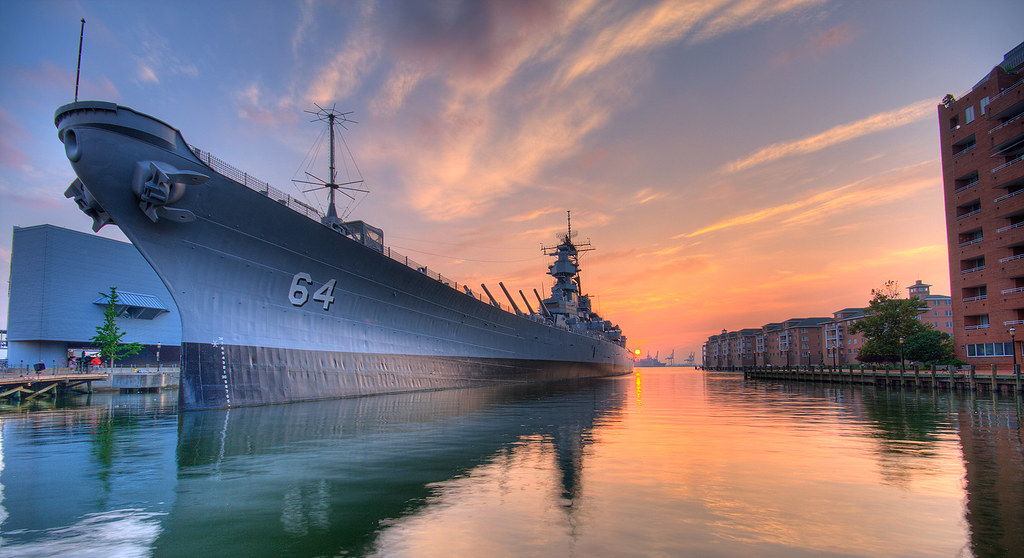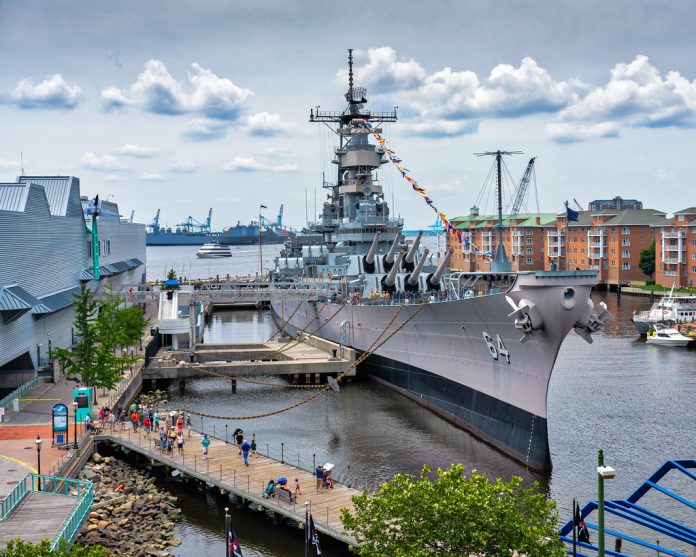
The resurgence of the battleship, long considered an obsolete titan of naval warfare, is sparking intrigue and debate among military aficionados and experts alike. In a surprising twist, the U.S. Navy has restored two Iowa-class battleships to its Naval Vessel Register (NVR), a decision that has raised eyebrows and spurred discussion among military circles.

The battleships in question, the USS Iowa (BB-61) and USS Wisconsin (BB-64), have storied pasts, having been reactivated during the Reagan administration’s naval expansion. But in 1995, questions regarding their relevance in modern naval operations led to their removal from active service. Their massive 57,700-ton frames and the prohibitive costs of reactivation had seemingly relegated these dreadnoughts to history.

Despite these concerns, advocates for the battleships persisted, bolstered by a Senate report highlighting the vessels as the Navy’s sole source of “around-the-clock accurate, high-volume, heavy fire support.” The battleships’ 16-inch guns, with a range of 27 miles, represent an era of firepower supremacy.

Yet, contemporary warfare tactics and the threat of mines and anti-ship missiles pose significant risks to such high-value targets, especially in close inshore operations where modern amphibious doctrine emphasizes the use of air assets like the MV-22 Osprey for troop landings.

Alternatives to the venerable 16-inch guns abound, including the 5-inch/62-caliber gun set to enter service on the destroyer Winston Churchill (DDG-81) in 2001, with an extended range and greater accuracy.

The vertical gun for advanced ships (VGAS) and various missile systems also offer greater flexibility and range, calling into question the viability of the battleships’ dated arsenal.

The financial implications cannot be ignored either; reactivating and operating two battleships would likely eclipse the cost of an Aegis destroyer.

Beyond the firepower and budgetary implications, the human element presents another challenge. With no current Navy personnel trained in the operation of the battleships’ unique systems, a significant crew investment would be required—numbers sufficient to man about ten Arleigh Burke (DDG-51)-class destroyers.

While the decision to resurrect these naval behemoths has sparked imagination and nostalgia, it also juxtaposes with the evolving nature of naval strategy and technology.

The concept of a “battlecarrier,” marrying battleship firepower with aircraft carrier aviation capabilities, demonstrates the enduring fascination with multi-role warships.

Historical efforts to convert battleships into hybrids, such as the conversion proposals for the Iowa-class or the Soviet Kiev class “heavy aircraft cruisers,” have shown mixed results and high costs.

Today’s advanced aircraft like the F-35B and MV-22 Osprey might make the idea more feasible but without any remaining battleships for conversion, the dream remains just that—a dream.

The decision to reintroduce battleships to the NVR has as much to do with political maneuvering as military strategy. Legislation driven by state interests and the desire to preserve these naval icons in some form—whether as a museum or memorial—illustrates the intricate dance between defense budgets, congressional influence, and the sentimental value of historic ships.

As military enthusiasts and analysts ponder the future of battleship utility, the underlying question remains: Does reinvigorating past symbols of naval might align with the pressing demands of modern warfare, or is it a costly nod to tradition in a rapidly changing battlefield?

In the grand narrative of military history, the battleship holds an indelible place. Yet, in today’s multifaceted and technology-driven naval landscape, where silent submarines and stealthy aircraft redefine power projection, the role of the once-revered battleship remains an open, and controversial, chapter.

